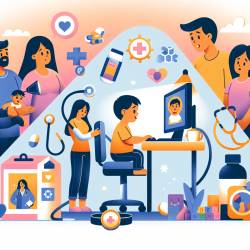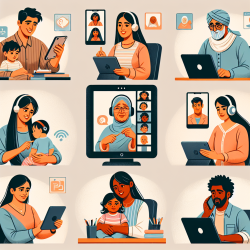Introduction
In the ever-evolving field of speech-language pathology, understanding societal trends can significantly enhance the efficacy of our practices. The research paper titled "America’s Liberal Social Climate and Trends" offers profound insights into how societal attitudes have shifted over the decades. This blog explores how practitioners can leverage these insights to improve their skills and outcomes for children.
The Research Findings
The study by Hout (2021) analyzes data from the General Social Survey, revealing a trend toward more liberal attitudes across various social dimensions in the United States from 1972 to 2018. The research highlights that 62% of the variables analyzed showed a liberal trend among recent birth cohorts compared to older ones. This liberal shift is evident in attitudes towards civil liberties, gender roles, and racial equality.
Implications for Practitioners
Understanding these trends is crucial for speech-language pathologists, especially those working with children. Here’s how you can incorporate these insights into your practice:
- Adapting Communication Strategies: As societal attitudes become more liberal, communication strategies should reflect inclusivity and acceptance. Practitioners can develop materials that are culturally sensitive and resonate with the diverse backgrounds of the children they serve.
- Promoting Social-Emotional Learning: With a more liberal social climate, there is a greater emphasis on social-emotional learning. Practitioners can incorporate activities that foster empathy, understanding, and respect for diversity.
- Incorporating Technology: The study highlights increased computer use over time. Practitioners can leverage digital tools and online resources to enhance therapy sessions, making them more engaging and accessible.
Encouraging Further Research
While the study provides a broad overview of societal trends, practitioners are encouraged to delve deeper into specific areas relevant to their practice. By staying informed about ongoing research, practitioners can continuously refine their approaches to meet the evolving needs of their clients.
Conclusion
America’s shifting social climate presents both challenges and opportunities for speech-language pathologists. By embracing these changes and integrating them into their practice, practitioners can enhance their effectiveness and create positive outcomes for the children they serve. For those interested in exploring the original research, you can access it here.










